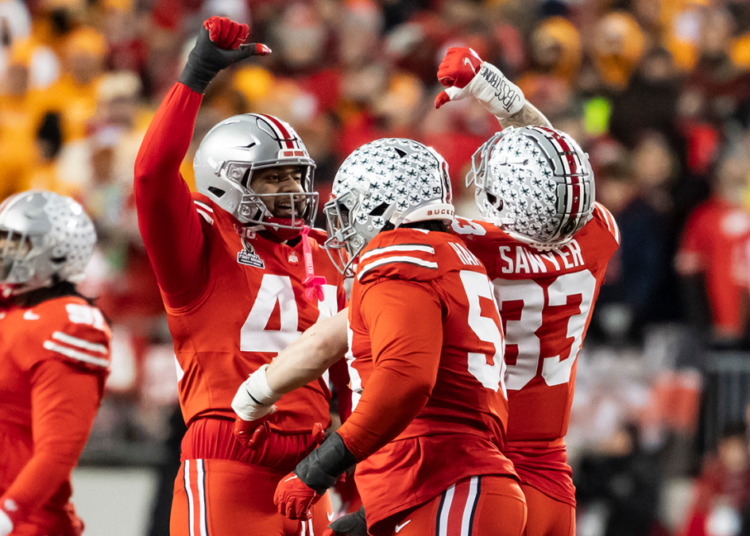It was straight chalk for the favorites in the first round of the College Football Playoff, but that still led to drastic changes as we reseed the teams still remaining in the field. But first, a problem that needs to be solved.
Fandom is strangely hyper focused on the lopsided results in the CFP’s first round with games decided by an average of 19.3 points. Even worse, the tone is tainted by casualness — and fans showing their lack of awareness around the product. Where were you when Georgia won the national title after it blew out TCU by 58 points, the largest win ever in a bowl game? Stringing up sacrificial lambs are nothing new in college football. Semifinal games during the first 10 years of the CFP were decided by an average of 17.9 points. The national champion has won the title by at least 15 points the last six years.
You’re asking, “Is this what we want college football to be?” That’s not a question worth answering. After all, if you’ve been paying attention, it’s always been this way.
The issue is the system and the clunky gears forced awkwardly into the machine by college football’s half-blind watchmakers.
In the end, the 12-team field is down to the eight best teams, though that is debatable because of the convoluted format. Rewarding the four highest-ranked conference champions with a first-round bye led to wider scoring margins in the first iteration of this 12-team CFP. Debate it if you want, it’s a hypothetical discussion based on little empirical evidence, but it’s still a viable issue that needs attention.
In January, we expect the CFP’s board of directors will discuss tweaks, including selection criteria and byes. If they do, we’ll look back and wonder if matchups like No. 10 seed SMU at No. 7 seed Tennessee or No. 9 seed Boise State at No. 8 seed Indiana would have provided more competitive matchups than Penn State — which would have received a bye without automatic qualifiers — choking out SMU in Happy Valley.
Eliminating the automatic byes for conference champs is a simple tweak that should be considered and would likely improve competition. The problem is every decision maker in the sport cares more about their silos than the health of the game. If you don’t believe me, just look at how much has changed over the last five years.
This reseeding exercise is much more reactionary, so we had some big moves as we enter the quarterfinal round. Let’s have a look at how the teams stack up and dive into the hypothetical matchups.
Reseeding the College Football Playoff bracket
(8) Boise State vs. (1) Oregon: Ashton Jeanty facing off against Oregon’s impressive defensive line in a massive rematch from Week 2? Yes, please. The Heisman Trophy runner-up rushed for 192 yards and averaged nearly 8 yards per carry in the 37-34 road loss earlier this season.
(7) Arizona State vs. (2) Ohio State: This is a massive mismatch. Ohio State’s offensive line had an easy time dealing with Tennessee’s elite defense front, and the Buckeyes’ receivers would have a sizable advantage against the Sun Devils’ secondary, which has allowed 115 (!) passes of 10-plus yards to rank 103rd nationally. Cam Skattebo would have to go off with a 200-plus yard performance to give ASU a chance at the upset.
(6) Penn State vs. (3) Georgia: Don’t these two seem similar? Penn State leans on the running game and tight ends with a solid quarterback as the ball handler; Georgia is now leaning on its backup quarterback and a strong defense, particularly in the middle, to win tight games. I’m not sure who to pick here, but let’s give the slight edge to the Bulldogs because of their big-game experience.
(5) Texas vs. (4) Notre Dame: Notre Dame beats teams with ease, but this would be its first top-10 opponent of the season. Texas has many more weapons than any opponent Notre Dame has faced this season. Also, Texas’ defensive line has been tremendous and seemingly maintained their otherworldly success from last season despite losing two generational tackles. How Texas defends Riley Leonard, who could be the game-changer, is the key. Plus, can Quinn Ewers take advantage of Notre Dame on the edges? Indiana struggled to do just that in the first round. This might be the best matchup in the reseeded bracket.
Read the full article here

























